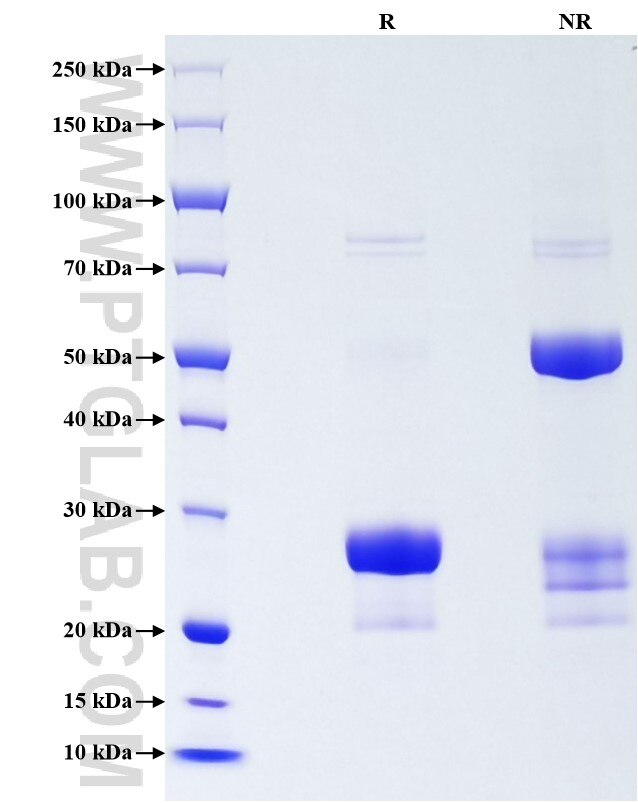Recombinant Rat Adiponectin protein (His Tag)
Species
Rat
Purity
>90 %, SDS-PAGE
Tag
His Tag
Activity
not tested
Cat no : Eg0872
Validation Data Gallery
Product Information
| Purity | >90 %, SDS-PAGE |
| Endotoxin | <0.1 EU/μg protein, LAL method |
| Activity |
Not tested |
| Expression | CHO-derived Rat Adiponectin protein Ile19-Asn244 (Accession# Q8K3R4) with a His tag at the C-terminus. |
| GeneID | 246253 |
| Accession | Q8K3R4 |
| PredictedSize | 25.5 kDa |
| SDS-PAGE | 25-29 kDa, reducing (R) conditions |
| Formulation | Lyophilized from 0.22 μm filtered solution in PBS, pH 7.4. Normally 5% trehalose and 5% mannitol are added as protectants before lyophilization. |
| Reconstitution | Briefly centrifuge the tube before opening. Reconstitute at 0.1-0.5 mg/mL in sterile water. |
| Storage Conditions |
It is recommended that the protein be aliquoted for optimal storage. Avoid repeated freeze-thaw cycles.
|
| Shipping | The product is shipped at ambient temperature. Upon receipt, store it immediately at the recommended temperature. |
Background
Adiponectin, also known as Acrp30, AdipoQ, and GBP28, is an adipocyte-secreted protein that circulates in high concentrations in the serum and acts to increase insulin sensitivity. Adiponectin modulates a number of metabolic processes, including glucose regulation and fatty acid oxidation. The serum concentration of adiponectin decreases in obese patients, opposite to other adipocytokines. In recent studies, serum adiponectin level progressively decreased in patients according to the severity of obesity, insulin resistance, diabetes mellitus and cardiovascular diseases. Low serum adiponectin level may be a predictive factor for type 2 diabetes mellitus (T2DM) and other cardiovascular diseases.
References:
1. Wang ZV, et al. (2016) J Mol Cell Biol. 8(2):93-100. 2. Liu M, et al. (2014) Best Pract Res Clin Endocrinol Metab.28(1):25-31. 3. Díez JJ, et al. (2003) Eur J Endocrinol.148(3):293-300. 4. Yamauchi T, et al. (2003) Nature.423(6941):762-9.
